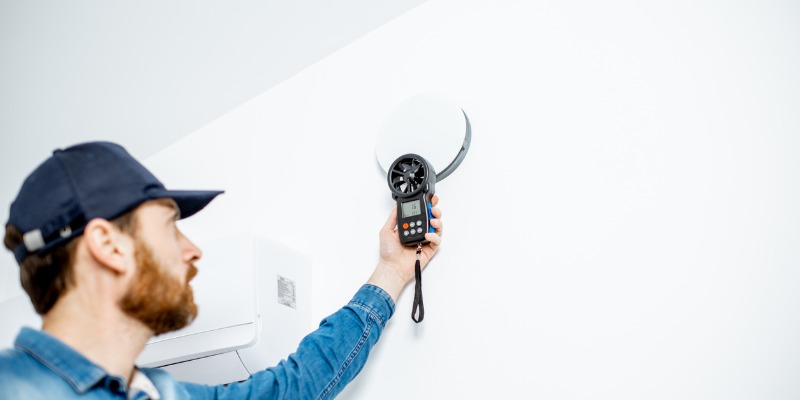
You might think you’re doing all the right things for your lung health—avoiding smoking, exercising regularly, and breathing in plenty of fresh air. But did you know there are invisible gases in your home capable of more damage than car pollution?
Inhaling radon, a naturally occurring gas, is the second leading cause of lung cancer in Canada—and it’s virtually everywhere. Learn more about radon gas and how to prevent its ill effects in this post.
What is Radon Gas?
Radon is a naturally occurring radioactive gas. Unstable elements in the soil break down over time and release radon. When this happens outdoors, the radon is diluted by fresh air and is harmless to our health. However, indoors, where there is less air circulation, radon can accumulate in larger quantities, posing a much greater risk to our respiratory systems.
Radon gas is invisible, tasteless, and odourless. Therefore, we can’t easily detect its presence without special radon detectors and test kits.
Where Does Radon Gas Come From?
Uranium, another radioactive element found naturally in the Earth’s crust, breaks down and releases radon as one of its decay products.
Radon enters a home or building through holes and cracks in the floors and walls as well as at floor-wall junctions. As a result, radon levels tend to be highest in basements, cellars, and ground-floor rooms, varying widely from home to home.
In fact, this radioactive gas can be found in all homes across Canada, though areas with a higher uranium content in the soil will see higher levels of radon. According to Statistics Canada, Saskatchewan, Manitoba, New Brunswick, and the Yukon are among the areas with the highest levels.
That said, there are also pockets where radon is emitted in quantities that significantly exceed the provincial average, including within Ontario.
What are the Health Risks of Being Exposed to Radon?
Radon is the #1 cause of lung cancer among non-smokers. Additionally, radon poses a significant risk to smokers since it has a synergistic effect when combined with harmful tobacco products.
According to the World Health Organization (WHO), radon-induced lung cancer accounts for 3% to 15% of all lung cancer cases in each country.
How to Reduce Radon in Your Home
All homeowners should test their homes for radon. This can be done using a radon detector or radon test kit found at many home improvement stores.
If radon levels in your home exceed the Canadian safety guideline of 200 Becquerels per cubic metre (200 Bq/m3), then you must take action for your and your family’s safety.
Some common radon-reducing methods include:
- Increasing under-floor ventilation
- Installing a radon exhaust system in the basement or under the home
- Improving the seals on walls and floors
- Improving the overall ventilation of a building
Contact a Radon Mitigation Professional Today
Many of these mitigation measures should be performed by a certified mitigation professional. Fortunately, at Guelph ClimateCare, our team is part of Canada’s largest network of radon mitigation experts, certified through the National Environmental Health Association’s National Radon Proficiency Program. Contact us today to get professional radon testing and ventilation improvements to ensure your home’s air is safe and healthy for all occupants.








